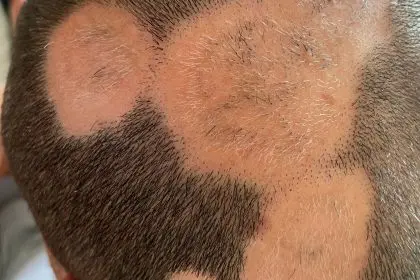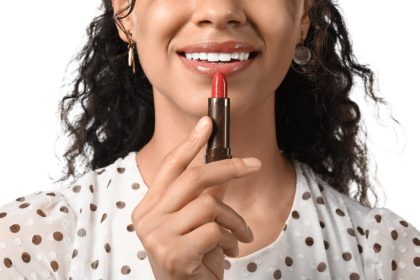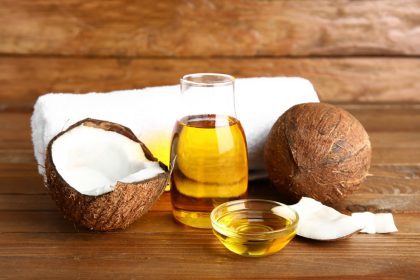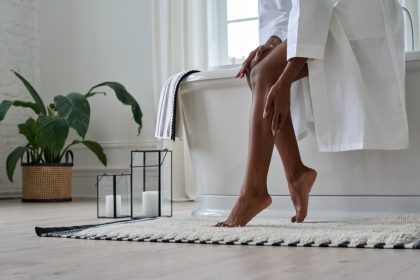That squeaky-clean feeling you’ve been chasing every morning in the shower? It might actually be the sound of your hair crying for help. If you’re reaching for the shampoo bottle daily—or even every other day—you’re likely caught in a cycle that’s damaging your locks, draining your wallet, and actually making your hair problems worse, not better. The dirty truth is that most of us have been brainwashed into over-washing.
The squeaky clean trap
That tight, squeaky feeling after a thorough shampoo has been marketed to us as the gold standard of hair cleanliness. In reality, it’s the sensation of hair that’s been stripped of its natural oils—essentially the feeling of your hair in distress. This squeaky sensation means you’ve removed the sebum, your scalp’s natural conditioning system that keeps hair soft, manageable, and protected.
When you wash too frequently, you’re not just cleaning your hair—you’re starting a problematic cycle. Your scalp, suddenly finding itself oil-free, gets the signal to produce even more sebum to replace what was lost. The result? Hair that gets greasier faster, prompting even more frequent washing. It’s a vicious cycle that keeps you reaching for that shampoo bottle while your hair quality steadily declines.
Most hair types can go at least 2-3 days between washes, while many can thrive with just once-weekly shampooing. Yet the average American washes their hair 4.9 times a week—a frequency that dermatologists and stylists agree is excessive for the vast majority of people.
The historical hair reality
Our obsession with daily shampooing is remarkably recent in human history. Before the 20th century, people typically washed their hair once a month or even less frequently. While modern indoor plumbing and product availability have certainly made washing easier, our hair biology hasn’t changed—we’re simply washing away natural oils that our ancestors relied on for healthy hair.
Early shampoos were much milder than today’s formulations, which are designed to create luxurious lather and remove every trace of oil. This shift toward stronger cleansers occurred alongside marketing campaigns that convinced generations of consumers that daily washing was essential for social acceptance and proper hygiene.
This marketing-driven shift has been remarkably effective. Many people now feel genuinely uncomfortable or even “dirty” if they go a day without shampooing, despite the fact that this frequency would have been considered bizarre throughout most of human history.
The sebum solution
The key to understanding healthy hair is appreciating sebum—that natural oil your scalp produces that shampoo strips away. Far from being “dirty,” sebum is your hair’s built-in conditioner, providing moisture, protection, and natural shine that no bottle of product can perfectly replicate.
When allowed to distribute naturally down the hair shaft, sebum coats and protects each strand from environmental damage, prevents moisture loss, and creates natural shine. The catch? This distribution takes time—time that frequent washing doesn’t allow. When you shampoo daily, the sebum never reaches the middle and ends of your hair, leaving them dry and vulnerable while your scalp continues overproducing oil.
By washing less frequently, you allow this distribution process to occur, eventually resulting in hair that’s naturally conditioned from root to tip. Many people who transition to less frequent washing report that their ends become healthier and require less trimming, while their oily roots problem gradually resolves itself.
The transition timeline
The hardest part of breaking the over-washing cycle is the transition period. When you first reduce washing frequency, your scalp—accustomed to overproducing oil to compensate for frequent stripping—will continue its hyperactive sebum production for a while. This creates a 2-4 week adjustment period where your hair might actually feel greasier than before.
This transition phase is where most people give up, interpreting the temporary increase in oiliness as proof that they need daily washing. In reality, it’s just your scalp’s way of adjusting to a healthier routine. Push through this phase, and your oil glands will gradually recalibrate, reducing production to appropriate levels once they realize you’re no longer constantly stripping away their output.
Stylists recommend gradual transitions—adding just one day between washes each week until you reach your optimal frequency. This slower approach makes the adjustment phase less noticeable and more manageable than going cold turkey on your shampoo habit.
The hair type factor
While most people overwash, the optimal shampooing frequency does vary significantly by hair type and texture. Straight, fine hair shows oil more quickly because sebum easily travels down the straight shaft. Curly, coily, and textured hair, with its twists and turns, allows oils to take much longer to travel from scalp to ends, often making these hair types chronically dry despite an adequately oily scalp.
This explains why many people with curly or textured hair find that shampooing just once a week—or even every two weeks—produces their best results. Meanwhile, those with very fine, straight hair might settle at twice-weekly washing as their optimal frequency. What’s nearly universal, however, is that daily shampooing is too much for almost everyone.
Understanding your hair’s structure helps determine your ideal washing schedule. The tighter your curl pattern or the coarser your hair texture, the longer you can likely go between washes. While straight, fine hair might need washing twice weekly, tight coils might thrive with just monthly cleansing supplemented by water-only refreshes.
The product problem
Another factor driving overwashing is product buildup. Ironically, many of the products we use to compensate for dry, damaged hair—heavy conditioners, serums, and styling products—create a coating that eventually needs to be removed with shampoo. This creates a dependency cycle where products necessitate shampooing, which creates dryness, which requires more products.
Reducing your reliance on heavy silicone-based products can help extend the time between necessary washes. Water-soluble styling products that rinse away without requiring shampoo can be game-changers for those trying to break the overwashing cycle.
When you do shampoo, focusing the cleansing action on your scalp rather than the lengths of your hair helps prevent unnecessary drying of the ends, which rarely need the stripping action of shampoo. The suds that naturally run down during rinsing provide sufficient cleansing for the lengths without the damage of direct shampooing.
The medical exceptions
It’s important to note that some scalp conditions legitimately require more frequent washing. Seborrheic dermatitis, certain forms of eczema, and excessive sweating from daily workouts might necessitate more regular cleansing. The key is using gentle, appropriate cleansers rather than harsh detergent shampoos when frequent washing is truly needed.
Medicated shampoos prescribed for conditions like psoriasis or severe dandruff also follow different rules than regular cleansing products. If you’re using these treatments, follow your dermatologist’s recommended frequency rather than general guidelines for washing reduction.
These exceptions, however, represent a minority of cases. For most people without specific scalp conditions, reducing shampoo frequency remains the single most effective way to improve hair health and appearance over time.
The greasy roots solution
During the transition to less frequent washing, dry shampoo can be a valuable tool—but its purpose is widely misunderstood. Rather than replacing regular shampoo indefinitely, dry shampoo works best as a temporary measure during the adjustment phase or for occasional emergency refreshes.
Applied correctly—at the roots only, preferably at night rather than in the morning—dry shampoo absorbs excess oil without stripping the scalp. However, it can create its own buildup if used too frequently, potentially leading to clogged follicles and scalp issues.
Other transition strategies include strategic hairstyling to disguise oilier roots, rinsing with water only between shampoo days, and using diluted shampoo or gentler cleansing conditioners when a refresh is needed but full shampooing would be excessive.
The better washing technique
Even when you do shampoo, chances are you’re doing it suboptimally. Effective shampooing focuses on thoroughly cleansing the scalp while minimizing exposure to the lengths of the hair, which rarely need the stripping action of detergents.
Try applying shampoo only to your scalp, massaging thoroughly with fingertips (not nails), and allowing the suds to naturally flow down the lengths during rinsing rather than directly shampooing the ends. This approach removes excess oil and buildup where needed while preserving natural protection on the more vulnerable parts of your hair.
Water temperature also matters significantly. Very hot water stimulates oil production and can damage the hair cuticle, while cool water helps close the cuticle, enhancing shine and reducing frizz. Ending your shower with a cool water rinse creates immediately noticeable improvements in hair appearance and manageability.
The financial upside
Beyond the hair health benefits, reducing shampoo frequency creates surprising financial savings. The average person using daily shampoo and conditioner spends hundreds of dollars annually on these products alone—not counting the additional treatments often needed to address the dryness that overwashing creates.
By cutting your washing frequency in half, you’re not just reducing immediate product costs but potentially eliminating the need for many damage-repair treatments and services. Many who transition to less frequent washing report needing fewer haircuts, fewer styling products, and less time under the blow dryer—all adding up to significant savings.
These financial benefits extend to environmental impact as well. Reduced product usage means fewer plastic bottles, less chemical production, and decreased water consumption—making your new washing routine better for both your wallet and the planet.
By breaking free from the daily shampoo habit that marketing campaigns rather than hair biology created, you’ll likely discover what many who’ve made the switch already know—less washing often means more good hair days, healthier locks, and simpler hair care routines. Your hair’s natural balance can usually manage itself beautifully when we simply stop interfering so often.















